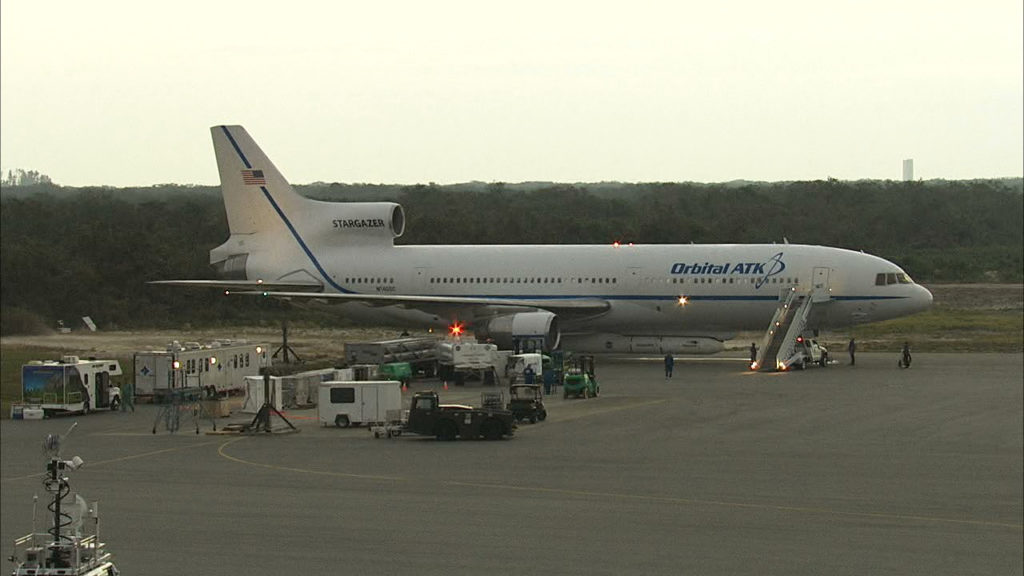
NASA’s Cyclone Global Navigation Satellite System mission, or CYGNSS, is scheduled to begin this morning with launch aboard an Orbital ATK Pegasus XL rocket at 8:35 a.m. EST. The one-hour launch window extends until 9:21 a.m. Forecasters with the U.S. Air Force 45th Weather Squadron predict a 90 percent chance of favorable conditions at launch time, so weather is not expected to be a concern today.
Preflight activities are in progress at the Skid Strip runway at Cape Canaveral Air Force Station in Florida, where Orbital’s “Stargazer” L-1011 aircraft will take off with the rocket, carrying it to an altitude of about 39,000 feet and deploying it about 110 nautical miles east-southeast of Daytona Beach. The access door to the forward section of the plane is closed, the stairs have been removed and all three engines are running.
The CYGNSS mission features a set of eight microsatellites that will fly in formation more than 300 miles above Earth, measuring ocean surface winds throughout the life cycle of tropical cyclones and helping scientists and forecasters better understand how these storms intensify.
Takeoff of the L-1011 is expected around 7:35 a.m. A NASA F-18 aircraft provided by the agency’s Armstrong Flight Research Center in California will serve as a chase plane today, providing visual contact and video of the L-1011, Pegasus XL rocket and the drop/launch sequence. The F-18 will take off shortly before the L-1011.
